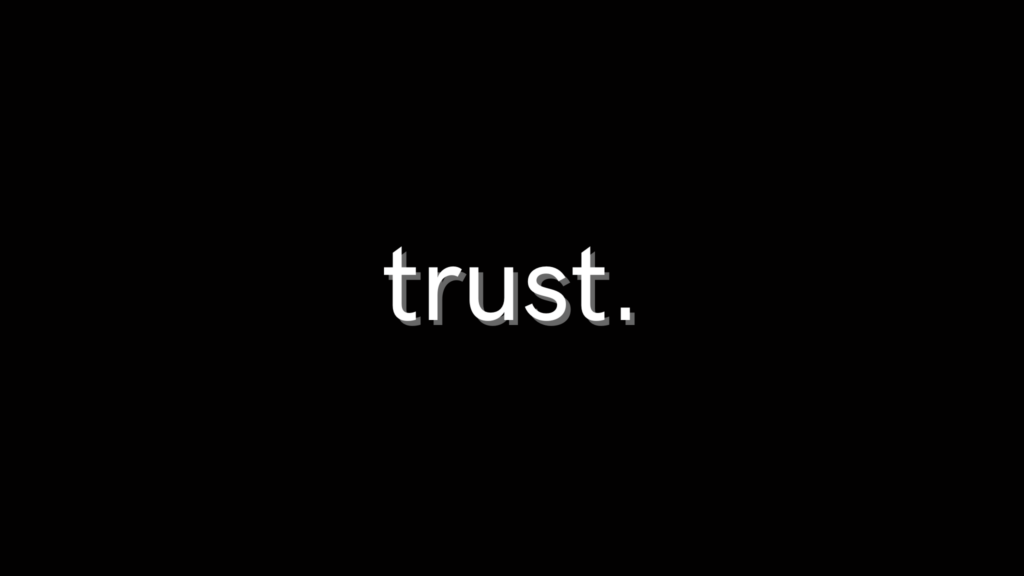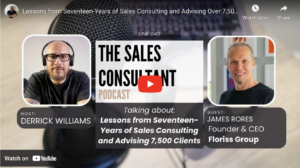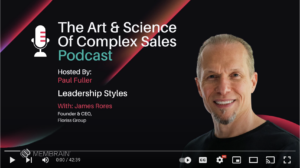They invent shared terminology to communicate this path internally, plot metrics around it and work hard to shepherd buyers to a decision that is in their favor.
I know this exercise very well. This is what I did for the first half of my sales career and what ultimately led me to the new, modern form of selling I advocate today.
Early in my career, I was obsessed with perfecting the sales process from my perspective as the seller. I was not thinking about improving my results by simply improving my customer’s experience. I had no interest in truly understanding the universal observation, “people love to buy as much as they hate being sold.”
It turns out there is a Universal Buying Cycle that, once understood and mastered, can help any salesperson sell the way their customers buy. I’m not talking about the way customers tell you they buy, or the way customers want you to think they buy. I’m talking about the way every customer has made a successful buying decision since the stone age.
Four Whys
There are four questions and only four questions that every buyer must answer, and therefore every salesperson must ask, to identify and win a successful buying decision. These ‘Four Whys’ combine to create what we call the Universal Buying Cycle.
It doesn’t matter what you sell. It doesn’t matter if your buyer is one person or a steering committee of 25. And, it doesn’t matter if your sales process takes a couple days or several months … these questions and the order they are asked and answered are always the same.
If your salespeople are not asking and answering these four questions in the proper order, chances are they are NOT developing well-qualified opportunities, winning at a high enough rate, optimizing deal values, or accelerating buy-cycles. In other words, they are not selling the way people buy.
The first question to ask is “Why CHANGE?”
To answer this question, your salespeople must discover and provoke what the buyer really wants. And, what the buyer really wants must be big enough to initiate an active buying cycle, not just kicking the tires.
Is your sales team asking enough good and tough questions to provoke the imagination of their buyers? Do they differentiate themselves through these questions, as leaders and trusted resources for their buyers? Or, do they just relate enough to start the relationship because they are so focused on being liked?
The second question to ask is “Why NOW?”
To answer this question, your salespeople must discover and provoke the positive IMPACTS change will create for the buyer. Ultimately, these IMPACTS must add up to a business case the buyer simply can’t ignore.
This is where the buyer’s definition of value is built. The buyer must value the IMPACT of change enough to make an investment in change. This conversation is a critical second step that most salespeople avoid until after the buyer turns price into an objection — until after the proposal is delivered and negotiations commence.
The third question to ask is “Why BUY?”
Finding the answer to this question is about discovering and provoking insights into what’s missing, i.e. the must-have NEEDS or requirements preventing buyers from achieving their business case.
Salespeople who jump from NEEDS to educating buyers on their capabilities, miss an opportunity to define the buyer’s ‘real’ problem and differentiate themselves as trusted advisors. Instead, educate buyers on the IMPACTS of addressing (or not addressing) their NEEDS. Only after the buyer understands the value of the opportunity before them is it advisable to discuss the capabilities you can bring to the table.
The fourth question to ask is “Why YOU?”
To answer to this question, your salespeople must discover and provoke an undeniably clear connection between the buyer’s WIN (i.e. WANTS, IMPACTS and NEEDS) and your SOLUTION.
Most salespeople start with their solution or skip steps and jump to their solution too early in the relationship. When this happens, salespeople slow down buying cycles, prematurely commoditize their offerings, shrink deal values and open themselves up to competitive bake-offs.
Salespeople who skip steps always leave value on the table, which makes their job harder and their products and services worth-LESS. Executing each step of the Universal Buying Cycle in the right order allows salespeople to define the buyer’s “real” problem or “WIN” before making a recommendation.
Adopting the Universal Buying Cycle is huge for any sales team. It transforms how you sell, from focusing on price and early solution pitching, to focusing on value and early emotional connections.
It is a simple concept but takes practice and discipline to master. I have seen salespeople change their habits overnight, using WINS™ to generate more than $50M in new qualified opportunities in less than a month. For others, it takes longer. It all boils down to how quickly a salesperson can make the commitment to asking the right people, the right questions, at the right time.
If you’re a salesperson who seeks personal and professional growth, invest time in this process. If you’re a sales leader looking for ways to breakthrough to new levels of success, introduce this to your team. Use the Universal Buying Cycle to get to the next level. If you need guidance along the way, subscribe to our newsletter and join the Growth Multiplier™ Movement. If you want to leverage our peer-to-peer growth masterminds, give us a call. There is always a new group forming.










